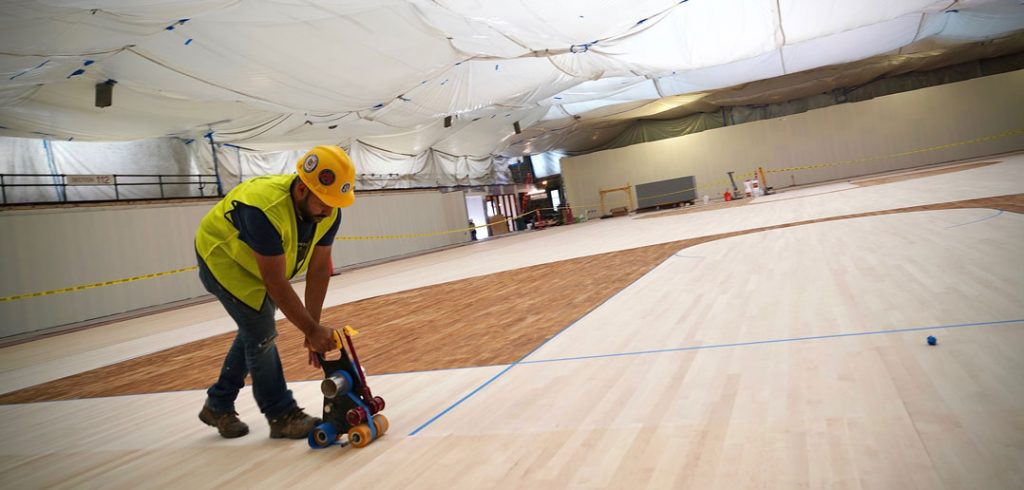The second phase of updates to the court, which focused on new flooring, is scheduled to be finished by mid-October.
“[It is] a much more modern and professional, state-of-the-art approach for a building that is close to 100 years old,” said Aldo Di Vitto, assistant director of architectural services.
The court is located in Fordham’s historic Rose Hill Gym, a building steeped in 94 years of history. For decades, it has hosted hundreds of basketball and volleyball games. Year after year, it has seen Encaenia ceremonies, Block F Awards dinners, Fordham Prep graduations, and performances by musicians like the Ramones. During World War II, it was even used as a U.S. Army barracks. The gym’s name has stayed the same, but the court was recently renamed the Frank McLaughlin Family Basketball Court in honor of Frank McLaughlin, FCRH ’69, a former Ram team captain, current associate vice president of student affairs for athletic alumni relations and external affairs, and distinguished athletic director emeritus.
Today, the building remains the oldest regularly-used NCAA Division I gym in the country. But nearly a century of wear and tear took its toll on the space. In the last 15 years, the arena has undergone several small-grade upgrades. In 2017, the University initiated a massive two-phase project—the most significant renovation to date. The first phase involved replacing all lower spectator seating; new bleachers with a seating capacity of 3,470 were installed, while chair back seats were placed behind the team benches.
Then just a few days after Fordham’s 2019 commencement, the second phase of renovations began. In roughly four-and-a-half months, the University, in collaboration with Caldwell & Walsh Building Construction, Inc. completely replaced the gym’s flooring system with a modern alternative. The new state-of-the-art wood surface contains shock-absorbing materials that reduce strain on student-athletes’ bodies, as well as a waterproof membrane that keeps moisture away.
“When you come down [on the floor after jumping], you compress your entire body, and you exert a ton of energy through your legs into the floor. You have this tremendous compressive force when you land,” explained John Puglisi, associate vice president for facilities management. “This floor will actually absorb that energy and return it much slower, so you don’t get the shock in your knees and ankles.”
In addition, the “sprung floor” gives student-athletes an extra boost.
“When you compress the floor, you compress these gaskets, if you will, or these pads,” Puglisi said. “And all of the energy gets returned back up to you.”
In a two-minute-long time-lapse video, viewers can watch the lengthy construction process from start to near completion. Workers in construction hats strip away the wooden panels, revealing compacted soil that is soon replaced with concrete. The surrounding walls morph from concrete to sheetrock. The pipes that once ran along the perimeter of the arena now run underneath the floor. Over the next three weeks, the floor will receive its finishing touches, and the bleachers, temporarily moved to a different location during construction, will be reinstalled in the space.
“The concept here was to provide a safer playing surface for our student-athletes,” Puglisi said.
The first basketball game played on the new floor will take place on Nov. 5. The women’s basketball team is scheduled to play Notre Dame University at 7 p.m. and the men’s basketball team will play St. Francis College at 9:30 p.m. There will be a Maroon Club Reception at Bepler Commons prior to the double-header at 5:30 p.m.
To date, the court’s $2.5 million fundraising campaign has raised more than $1.5 million—more than half of its intended goal. Donations in support of the court renovations can be made here.

